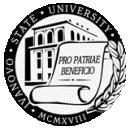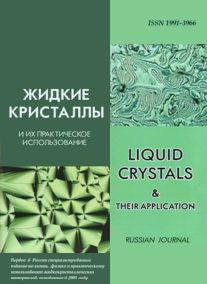|

|
Liquid Crystals and their Application
Russian Journal Zhidkie kristally i ikh prakticheskoe ispol'zovanie Жидкие кристаллы и их практическое использование |

|
|

|

|
|
|
Menu

|
|
|
|
|
Zhidk. krist. ikh prakt. ispol'z. = Liq. Cryst. and their Appl., 2016, 16 (4), 9—21.
DOI: 10.18083/LCAppl.2016.4.9 |

|
|
Optically Anisotropic and Interferential Remedies: Properties, Technologies, Applications
|
V. M. Kozenkov1, A. A. Spakhov1, V. V. Belyaev1,2, D. N. Chausov1
|
Author affiliations
1Educational and Research Laboratory of Theoretical and Applied Nanotechnology, Moscow Region State University,
10-a Radio St., Moscow, 105005, Russia
2Peoples' Friendship University of Russia,
6 Miklukho-Maklaya St., Moscow, 117198, Russia
E-mail: aa.spakhov@mgou.ru
|
|
Abstract
This review relates to the development of thin film (a few micrometers) marking means for identification of various objects and articles. Our analytical survey describes basically media, exhibiting the effect of optical anisotropy or interference and providing the ability to create a variety of ways and means of identifying the authenticity of the product. It is based on the use of protective elements, in particular, with hidden (latent) visually invisible in natural light optically anisotropic marks or initially visually visible marks. These media change their optical properties in polarized light. Their rendering or machine-readabily can be realized by means of polarizers and polarization-optical methods in UV-, visible and near infrared regions of the spectrum.
The most practical interest for mass and individual production of anisotropic optical remedies are structures on the basis of lyotropic and cholesteric liquid crystals as well as pigmented ones.
To create such patterned polarization protective structures with kinematic (dynamic) color and/or stereoscopic effects many photoanisotropic materials are used. They are based on the photochemically stable substances that provide a unique opportunity to spatially modulated distribution of the optical axis, as well as on the lyotropic and cholesteric liquid-crystalline compositions in combination with the method of photoorientation for creation of such structures.
Some options of new remedies are proposed, in particular, on the ground of known optically anisotropic materials and devices, and anisotropic and isotropic multilayer media based on interference effects.
Keywords: liquid crystals, birefringence, anisotropy, dichroism
|
|
|
|
|
|




